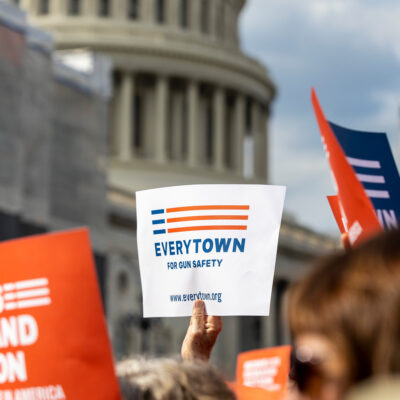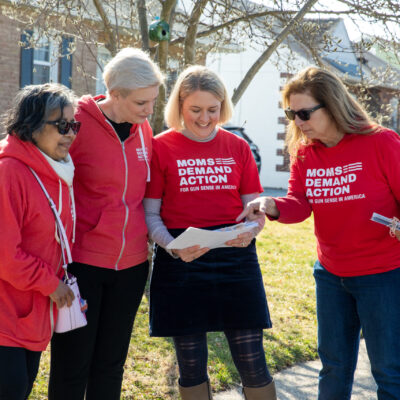Fatal Shooting of Cincinnati Third-Grade Student a Tragic Reminder That Gun Violence Continues Amid the Pandemic
5.19.2020
On Sunday afternoon, Chase Gilbert, an 8-year-old boy, was shot and killed in an apartment in Cincinnati, according to police reports. Gilbert was a third grade student at Riverview Elementary School and a talented football player, according to a statement released from his mother.
As COVID-19 continues to disrupt the lives of Americans around the country, daily gun violence has continued — and Ohio is no exception. According to The Enquirer, homicides in Cincinnati have increased 131 percent this year compared to the same period in 2019.
Already, there have been 30 homicides in the city, from Jan. 1 to April 28. During the same time last year, 13 people were shot and killed, according to data from the Cincinnati Police Department.
“My heart is with the Gilbert family,” said Pastor Jackie Jackson, a volunteer with the Ohio chapter of Moms Demand Action and a gun violence survivor who was shot by an adult neighbor while playing tag with his friend at the age of 10 in 1970. “Gun violence has skyrocketed in Cincinnati this year — lawmakers must prioritize common-sense measures to prevent gun violence and save lives when they return to session.”
“Cincinnati has had a string of shootings since the pandemic hit Ohio,” said Gina Warren, a volunteer with the University of Cincinnati Students Demand Action. “Lawmakers need to focus on ways to prevent gun violence, rather than dangerous legislation like Stand Your Ground that would increase gun violence.”
According to the FBI’s National Instant Criminal Background Check System (NICS), the number of background checks conducted in Ohio during April 2020 was 28 percent higher than in April 2019. An Everytown analysis of the NICS numbers also estimates that gun sales rose 63 percent during the same time period.
In an average year, more than 500 people in Ohio die by gun homicide, but instead of focusing on common-sense gun safety legislation this session, lawmakers continued to push dangerous Stand Your Ground legislation.
Stand Your Ground laws are associated with clear increases in gun homicides and encourage violence, often among perpetrators with violent backgrounds. Nationally, Stand Your Ground laws are associated with an increase in firearm homicides and injuries, and do not deter crime. In fact, at least 30 people nationwide are killed each month as a result of Stand Your Ground laws.
Stand Your Ground also has a disproportionate impact on communities of color. When white shooters kill Black victims, the resulting homicides are deemed justifiable 11 times more frequently than when the shooter is Black and the victim is white. Georgia, where Ahmaud Arbery was shot and killed, is one of the 26 states with a Stand Your Ground law, which the original prosecutor on Arbery’s case pointed to as one of the reasons he refused to pursue charges against the shooters.
Here’s more on gun violence in Ohio:
- On average, nearly 1,500 people die by gun violence every year in the state.
- In Ohio, gun deaths have increased 54 percent in the last decade, compared to an 18 percent increase nationwide. Gun homicide has increased 49 percent, compared to a 19 percent increase nationwide, in the same time period.
- Black people are 13 times as likely as white people to die by gun homicide in the state. Of all homicides in Ohio, 74 percent involve a gun.
Statistics about gun violence in Ohio are available here, and information on how Ohio’s gun laws compare to other states’ overall is available here.




